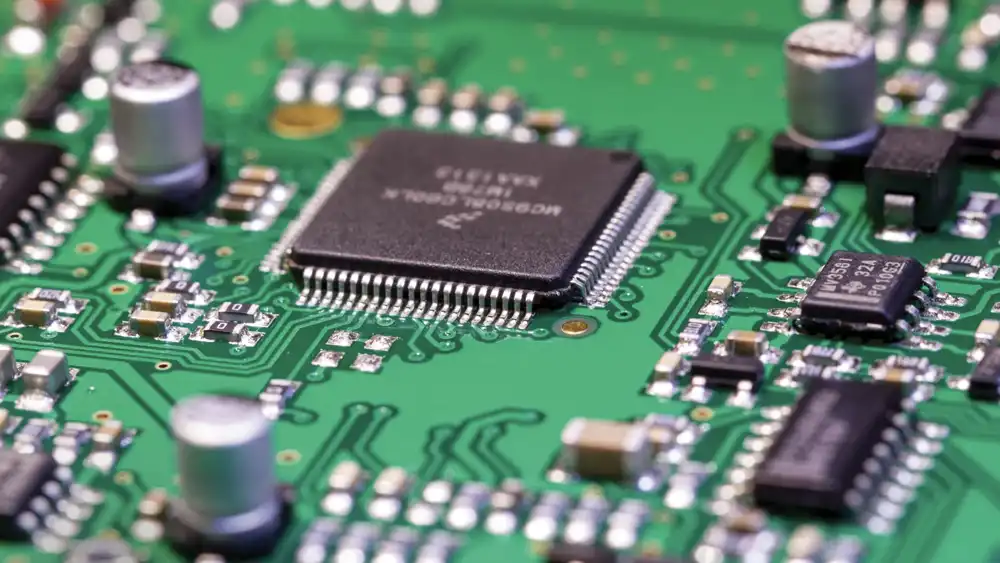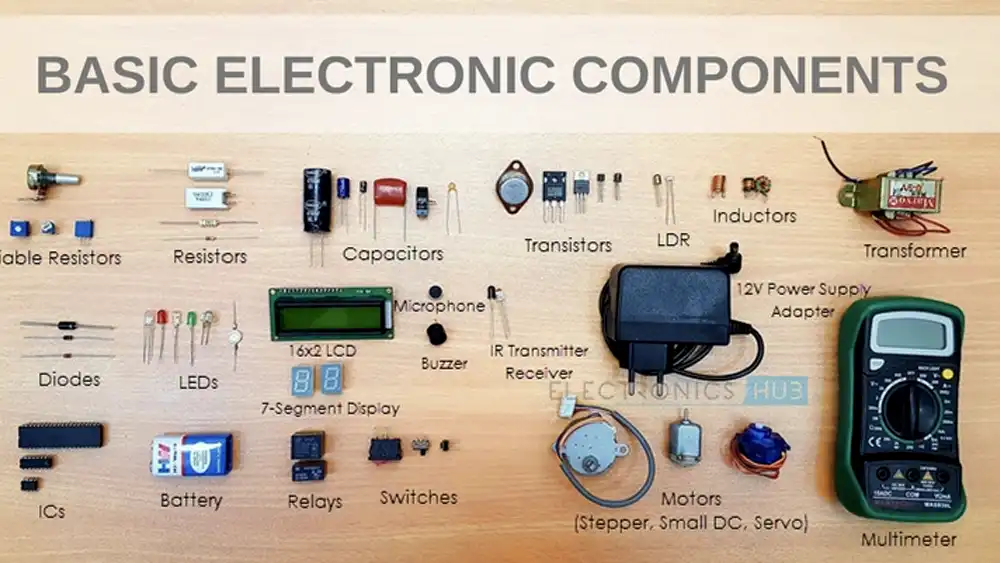Discover the essence of electronic components with our comprehensive guide to their names and abbreviations. Unravel the world of electronic components today!
Basic Electronic Components

Electronic components are discrete devices or physical entities within an electronic system, designed to affect electron flow or electron control. They are the fundamental units of electronic circuits, each serving a specific purpose in facilitating the flow of electric current. Without electronic components, modern technology as we know it would not exist.
Common Electronic Components Names

Here are the most common basic electronic components with names the following:
Resistors
Resistors are passive two-terminal electrical components that limit the flow of electric current. They are essential for controlling voltage levels, and current flow, and providing specific resistance values in circuits.
Capacitors
Capacitors store and release electrical energy in the form of an electric field. They are crucial for filtering, smoothing, and regulating voltage in circuits, as well as for timing and coupling applications.
Inductors
Inductors, also known as coils or chokes, store energy in a magnetic field when current flows through them. They are used in circuits for energy storage, filtering, and impedance matching.
Diodes
Diodes are semiconductor devices that allow current to flow in one direction while blocking it in the opposite direction. They are commonly used for rectification, signal demodulation, and voltage regulation.
Transistors
Transistors are semiconductor devices used for amplification, switching, and signal modulation in electronic circuits. They are the building blocks of digital logic gates and integrated circuits.
Integrated Circuits
Integrated circuits (ICs) are miniature electronic circuits consisting of interconnected semiconductor devices on a single chip. They perform various functions, including amplification, signal processing, and data storage, in a compact and efficient manner.
Relays
Relays are electromechanical switches that control the flow of electricity by opening or closing contacts in response to an electrical signal. They are used for remote control, automation, and safety interlocking in electronic systems.
Transformers
Transformers are passive electrical devices that transfer electrical energy between two or more circuits through electromagnetic induction. They are essential for voltage conversion, impedance matching, and isolation in power supply systems.
All Electronic Components Names and Pictures PDF
List of Electronic Components Name Abbreviations
Here’s a list of list of electronic components name abbreviations in the following:
- C – Capacitor
- R – Resistor
- L – Inductor
- D – Diode
- T – Transistor
- IC – Integrated Circuit
- LED – Light Emitting Diode
- FET – Field Effect Transistor
- BJT – Bipolar Junction Transistor
- MOSFET – Metal Oxide Semiconductor Field Effect Transistor
- SCR – Silicon Controlled Rectifier
- TRIAC – Triode for Alternating Current
- VR – Voltage Regulator
- OP-AMP – Operational Amplifier
- ADC – Analog-to-Digital Converter
- DAC – Digital-to-Analog Converter
- PSU – Power Supply Unit
- PWM – Pulse Width Modulation
- AC – Alternating Current
- DC – Direct Current
These abbreviations are commonly used in schematics, datasheets, and technical documentation related to electronic components.
Applications and Functions
Electronic components find applications in a wide range of industries, including telecommunications, automotive, aerospace, medical, and consumer electronics. They perform functions such as signal processing, power management, data storage, and control in various electronic devices and systems.
Choosing the Right Electronic Components
Selecting the appropriate electronic components for a specific application requires consideration of factors such as electrical specifications, operating conditions, reliability, and cost. Engineers and designers must carefully evaluate these factors to ensure optimal performance and longevity of electronic systems.
Conclusion
In conclusion, electronic components play a vital role in the functionality and performance of electronic devices and systems. By understanding their names, functions, and applications, individuals can gain insight into the inner workings of modern technology and explore exciting opportunities in the field of electronics.
FAQs
What are the most commonly used electronic components?
Some of the most commonly used electronic components include resistors, capacitors, diodes, transistors, and integrated circuits.
How do I choose the right electronic components for my project?
Choosing the right electronic components involves considering factors such as electrical specifications, operating conditions, and reliability requirements.
What are some emerging trends in electronic components?
A3: Emerging trends in electronic components include miniaturization, wearable electronics, flexible electronics, and environmentally friendly materials.
Can I mix different types of electronic components in a circuit?
A4: Yes, electronic circuits often contain a mix of different types of components to perform various functions.
Where can I learn more about electronic components?
A5: There are numerous online resources, books, and courses available for learning about electronic components and their applications.